Go away, Mr. President.
Not necessarily that way. But after a combative, exhausting six months in office – and a particularly tough week, with health-care negotiations, upheaval over the Russia probes and frenetic Twitter activity – you, and the country, need a vacation.
You're a president without precedent, to be sure, but in the matter of presidential holidays, your predecessors have some useful lessons in leisure to share. Even some past presidents you may not especially admire revelled in recreation and prospered by getting away – and several of them managed to change history while on vacation.
"The ability for a president to relax and to replenish his energies," said Doris Kearns Goodwin, the Pulitzer Prize-winning biographer of Abraham Lincoln, Franklin Delano Roosevelt and Lyndon B. Johnson, "is an essential quality of leadership." This is one tutorial Mr. Trump, who is wary of taking a traditional holiday away from his golf resorts, should heed. "For any president, the ability to get away – not to be in the public eye – is an unappreciated part of the presidential vacation," said Anita Dunn, who was president Barack Obama's communications director. "Obama benefited from that and from the time to think and to read – to read not for a purpose but to think. The president could actually read a book."

Dec. 27, 2010: President Barack Obama orders Shave Ice with family and friends at Island Snow at Kailua Beach Center in Kailua, Hawaii.
CAROLYN KASTER/ASSOCIATED PRESS
Or have some fun. George H.W. Bush and his son George W. Bush repeatedly came here, to a stunning seaside promontory in the brisk, refreshing air of coastal Maine. The father, who until his later years never mastered the skill of sitting still, invented and then mastered a game called speed golf, racing around the 18 holes at Cape Arundel Golf Club at manic speed. Then, not yet nearly fatigued, he often took off in his cigarette boat to surge south to the tiny beach town of Ogunquit, long favoured by Quebeckers on holiday, to devour a lobster roll on the sunny deck of Barnacle Billy's restaurant on tranquil Perkins Cove.
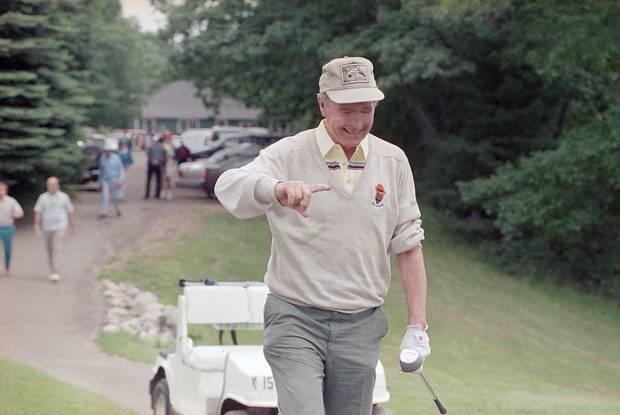
July 3, 1989: U.S. president George H. Bush pauses with a tee in his mouth while playing golf at the Cape Arundel Golf Club in Kennebunkport, Me.
RICK BOWMER/ASSOCIATED PRESS
Cable television commentators and rival politicians may rail at presidential vacations – Mr. Obama's Hawaiian retreats never failed to spark controversy – but White House insiders know that chief executives are always on call. "A president never leaves his responsibilities behind," said Andrew H. Card, who was transportation secretary to the elder Mr. Bush and White House chief of staff to the younger one. "He may not be at the White House, but the presidential burdens go with him wherever he goes. Presidents don't take what others might consider a proper vacation. They just work in a different venue."
Indeed, chief executives such as Dwight D. Eisenhower believed that national leaders profit mightily from time away from the White House. "President Eisenhower used to say that he was paid to make six decisions a year, and the idea is that you have to make big calls and good calls," said his grandson, University of Pennsylvania historian and biographer David Eisenhower, after whom the presidential retreat, Camp David, was named. "Oftentimes it requires a kind of zen – you have to be in the right frame of mind and rested and often alone." Prof. Eisenhower, who is also the son-in-law of former president Richard M. Nixon, added: "My grandfather always built in a lot of apparent relaxation – golf, card games – and that was very much part of his routine. Having seen a lot of other presidents, including Nixon, I think it is invaluable."

1960: A 12-year-old David Eisenhower, grandson of president Dwight D. Eisenhower, poses with the sign at Camp David, the presidential retreat named in his honour.
EISENHOWER LIBRARY
The elder Mr. Bush, whose favourite vacation companion was probably Brian Mulroney, was here, on the rocky Maine coast, when Iraq issued its threats to Kuwait in 1990. He planned much of the U.S. response to Saddam Hussein from the grey clapboard retreat that his grandfather, George Herbert Walker, who originated golf's Walker Cup, purchased more than a century ago. Years later the younger Mr. Bush invited Vladimir Putin here for a fishing expedition. Unable to resist the adventure, the senior Mr. Bush joined them and then proceeded to raise Russian eyebrows by slamming the throttle on the boat. (There is no evidence to suggest Mr. Putin stripped to the waist.)
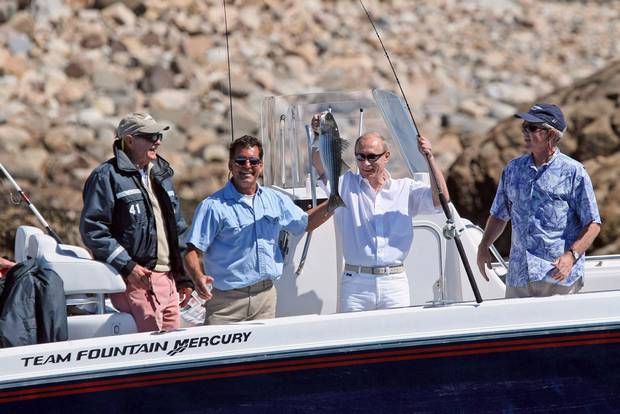
July 2, 2007: Then-president George W. Bush, right, and former president George H.W. Bush, look on as Russian President Vladimir Putin displays his catch during a fishing outing in Kennebunkport, Me., on Monday, July 2, 2007. Second from left is fishing guide Billy Bush.
ERIC DRAPER/THE WHITE HOUSE/THE NEW YORK TIMES
The Bushes were not alone in making significant decisions while on holiday. Like three other presidents, Mr. Lincoln escaped the heat of Washington by repairing to Anderson Cottage, now on the grounds of the Armed Forces Retirement Home on the outskirts of the capital. It was there that he decided to emancipate the slaves.
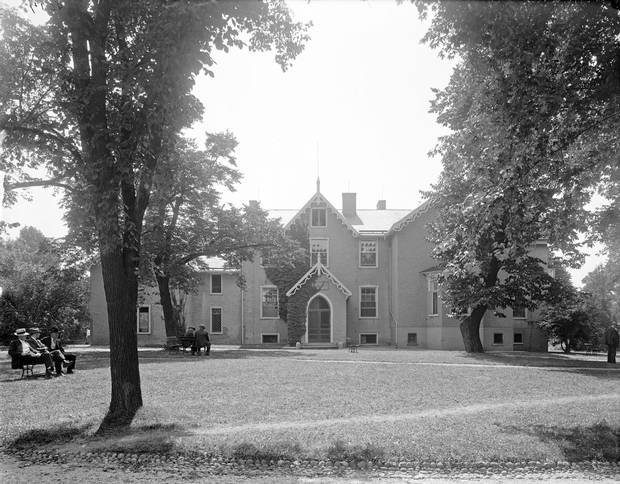
Anderson Cottage, Abraham Lincoln’s summer White House, shown between 1905 and 1945.
LIBRARY OF CONGRESS
Franklin Delano Roosevelt undertook a 10-day Caribbean cruise in 1940, with stops in Jamaica, St. Lucia, Antigua and Eleuthera, where he lunched with the Duke of Windsor, in exile after his abdication as king. A seaplane delivered to the president a letter from Winston Churchill – "one of the most important," the British wartime leader said, he had ever written. In it the prime minister pleaded for arms and ships to fight the Nazi onslaught. On the USS Tuscaloosa, Mr. Roosevelt, weary of congressional obstruction, decided to proceed with the Lend-Lease program to provide aid to the Allies.
"I began to get the idea he was refuelling, the way he so often does when he seems to be resting and carefree," aide Harry Hopkins said of the president's Lend-Lease revelation on his Caribbean cruise. "Then, one evening, he suddenly came out with it – the whole program." Robert Sherwood, the playwright, four-time Pulitzer winner and a wartime speechwriter for FDR, said Mr. Roosevelt "put in his time on the cruise evolving the pattern of a masterpiece."

Dec. 3, 1940: President Franklin D. Roosevelt waves to crowd while aboard the USS Tuscaloosa in Miami.
FDR LIBRARY PHOTOGRAPH COLLECTION
Some 17 years later, General Eisenhower – as he preferred to be called, even as president – was on holiday at the Newport, R.I., naval base, playing golf and engaging in a card game in which the president, according to one of his companions, "was the big loser and as usual didn't like it." Then the struggle over the integration of Little Rock Central High School in Arkansas developed.
In the middle of the episode, General Eisenhower invited Governor Orval Faubus, an opportunistic segregationist, to Newport for a dramatic confrontation. The two met privately, but later the governor betrayed the president and continued his intransigence. The crisis deepened until General Eisenhower, en route to a golf game at Newport Country Club, was told an angry mob had assembled outside the school. He swiftly affirmed the use of federal troops to enforce integration.
Mr. Trump doesn't have a challenge as wide-ranging as the Great Depression, nor a crisis as imminent as the Arkansas integration issue, but he faces low approval ratings, difficulties with Congress and the North Korean nuclear program. A round of golf at the Trump National Golf Club in Bedminster, N.J., isn't enough of a distraction for the leader of a superpower.

July 8, 1961: President John F. Kennedy meets on the patio of his summer home in Hyannis Port, Mass., with secretary of defence Robert McNamara, General Maxwell Taylor and Dean Rusk, Secretary of State.
ASSOCIATED PRESS
Yet even on holiday, presidents aren't granted a vacation. John F. Kennedy, at the family compound in Hyannis Port, Mass., invited secretary of state Dean Rusk, secretary of defence Robert McNamara and General Maxwell Taylor, the soon-to-be chairman of the joint chiefs of staff, on a Cape Cod sailing expedition. Between boatside swims by Mr. McNamara and Gen. Taylor, the president complained about the State Department's failure to accede to his orders on a diplomatic matter. When the Marlin docked again, an aide handed over a cable indicating Soviet leader Nikita Khrushchev had cancelled the demobilization of 40 per cent of the country's military personnel.
Presidential complaints such as Mr. Kennedy's often emerge during holidays. Even when he was away from the White House, Mr. Nixon "gnawed at the same themes: the unfriendly press, his disobedient staff and inadequate speechwriters, people who did not appreciate how hard he worked or did not emphasize his courtesy, his warmth, his thoughtfulness when they talked of him to outsiders," Richard Reeves wrote in his 2001 biography of the 37th president.

1972: Richard Nixon discusses the Vietnam War at Camp David with National Security Advisor Henry Kissinger, left, and major-general Alexander Haig Jr.
OLIVER F. ATKINS/U.S. NATIONAL ARCHIVES AND RECORDS ADMINISTRATION
Mr. Nixon was a restless individual, often bopping from Camp David to his homes in Key Biscayne, Fla., and San Clemente, Calif. "I always wondered why he liked the beach so much," said John Farrell, author of a new Nixon biography. "His brother Ed said it was the 'white noise' of the waves, that it would drown out everything else, and he could walk alone."
But presidents sometimes do a lot of nothing, itself an American tradition. An Associated Press poll published this summer showed that almost three-quarters of Americans say rest and relaxation are the principal benefits of a vacation.
Both Ronald Reagan and George W. Bush relaxed by cutting wood and pruning trees on their retreats – Mr. Reagan, 2,500 feet above sea level amid the tangerine and lemon trees outside Santa Barbara, Calif., and Mr. Bush amid the brush of rural Texas.
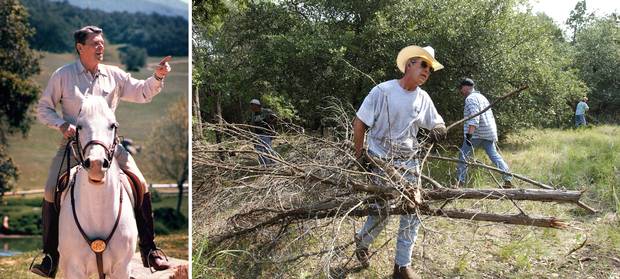
March 19, 1985: Ronald Reagan rides a horse at Rancho del Cielo, northwest of Santa Barbara, Calif.
Aug. 9, 2002: George W. Bush clears cedar at his 650-hectare (1,600 acre) ranch in sun-baked Crawford, Texas.
PETE SOUZA/THE WHITE HOUSE/AP/ERIC DRAPER/THE WHITE HOUSE/AGENCE FRANCE-PRESSE
One weekend in July, 1983, Mr. Reagan, then 72, went to one of the back trails of his Rancho del Cielo retreat, retrieved the wood he had cut and split the previous winter, loaded it in a trailer and stacked it behind the barn. "He works hard – very hard," his woodsman companion Denis LeBlanc, an official with the National Telecommunications and Information Administration, told me then. "He's so energetic that he's out of a different mould than the normal, everyday man."
Aides to the younger Mr. Bush, who liked to clear brush and make home repairs during his Crawford, Tex., holidays, had similar observations. The president would work in the morning and then take on physical tasks. "He could ride his bike and go for a run," said Mr. Card, who as White House chief of staff was present at many of these holidays. "He could do some physical things he couldn't do at the White House. It was a change in attitude, too. Believe me, he didn't slough off, but he refreshed himself."
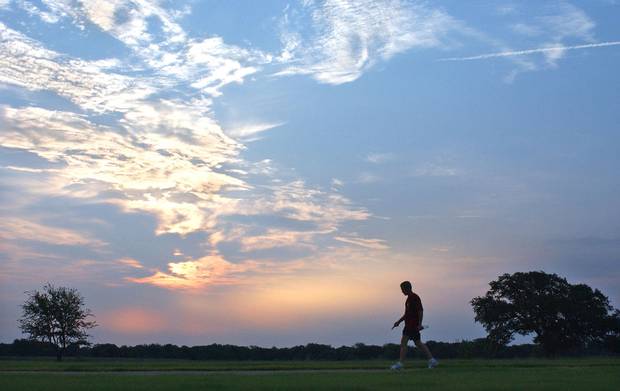
Aug. 9, 2002: U.S. president George W. Bush is silhouetted against an early morning sky after a run at his ranch in Crawford, Texas on August 9, 2002.
ERIC DRAPER/THE WHITE HOUSE/REUTERS
Mr. Trump may repair to the Bedminster golf resort beginning Aug. 3, but that is not like following Mr. Bush or Mr. Reagan into the woods – an American tradition celebrated by Henry David Thoreau, the 19th-century transcendentalist who, as he put it in Walden, "went to the woods because I wished to live deliberately, to front only the essential facts of life." Grover Cleveland, president from 1885 to 1889 and from 1893 to 1897, was so aggrieved that presidential obligations prevented him from taking his 1887 holiday, he wrote this to a friend vacationing in the woods: "I wish I was there too, but there is positively no hope for me I can see," adding, "I am getting as cross as a bear which is a very bad sign I think."
Herbert Hoover, president during the Great Depression, was often as cross as a bear, but he created a presidential retreat in Virginia's Shenandoah Mountains, enjoying the cool air where the mosquitoes did not follow nor bite. "The president strikes me as being in very much better condition," secretary of state Henry L. Stimson wrote about a trip to the Rapidan River cabin in 1931, amid the privations and political tensions of the economic crisis. "His poise is better and he is more cheerful, and although he is oppressed by the terrible state of the country, he does not strike me as fretting as much."

1929: Herbert Hoover, right, and Lou Henry Hoover sit o nthe porch at his summer weekend retreat in Virginia.
NATIONAL PARK SERVICE
Mr. Hoover's Virginia cottage compound, the precursor to Camp David, is today accessible by hikers and staffed by the Navy and Marine Corps. Under FDR the retreat, originally named Shangri-La, became the principal presidential retreat, though he also enjoyed Warm Springs, Ga., where he made progress in his polio battle and where, a month before his death, he dined with his lover, Lucy Mercer Rutherford – whom he had promised never to see again – along with William Lyon Mackenzie King, perhaps the most curious dinner party of any presidential holiday ever.

May, 1943: Franklin D. Roosevelt and Winston Churchill go fishing at Shangri-La, now Camp David.
FDR PRESIDENTIAL LIBRARY & MUSEUM
Every modern president but Mr. Trump has considered Camp David, the retreat in Catoctin Mountain Park, among the top presidential perks. (Mr. Trump once suggested he could be content there for about 30 minutes.) It was there, in 1965, that Lyndon B. Johnson grabbed Lester B. Pearson by the lapels after the prime minister delivered a speech in Parliament suggesting a pause in U.S. bombing in Vietnam. "Don't you come into my living room and piss on my rug," the president, in a celebrated confrontation, told the startled Mr. Pearson.
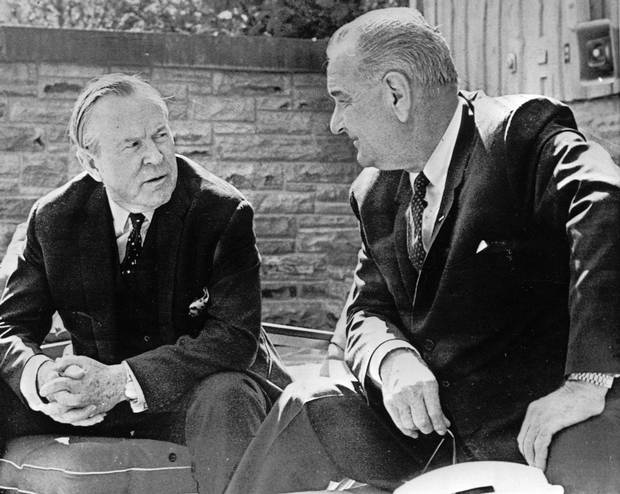
April 3, 1965: Canadian prime minister Lester Pearson, left, stresses a point in his discussions about the Vietnam War with U.S. president Lyndon Johnson at Camp David.
ASSOCIATED PRESS
Even so, the favoured venue for presidential getaways is New England, perhaps for the cooler summertime temperatures and for a rustic environment that lends itself to reflection and relaxation.
Woodrow Wilson spent the summers of 1913 to 1915 in the magisterial residence, known as Harlakenden, of U.S. novelist Winston Churchill, an acquaintance but not a relative of the British prime minister. When Mr. Wilson left the Cornish, N.H., house, with its grand entrance and multiple chimneys, he expressed his disappointment in having to return to the executive mansion, saying, "One could hardly imagine a more empty and forlorn house than this."
Bill Clinton was devoted to Martha's Vineyard, off the Massachusetts coast, returning to the home of developer Richard Friedman almost 10 times and often filling the house with board games and books. "He was extremely active," said Mr. Friedman, who moved nearby during the presidential visits but wandered over often to tend to his garden and sit with the president in lazy hammocks. "He had incredible energy there and made a ton of friends and was out every night. He loved to be without a schedule."

Aug. 23, 1993: President Clinton waves from the top of the cruise boat Relemar with Jackie Kennedy Onassis, middle right wearing a scarf, and other Clinton and Kennedy family members in Vineyard Sound off the coast of Martha’s Vineyard, as guests of Onassis for a lunchtime cruise.
CHARLES KRUPA/ASSOCIATED PRESS
And Calvin Coolidge, born in Vermont but later a governor of Massachusetts, spent the summer of 1925 in my seaside hometown of Swampscott, Mass. He stayed at White Court on Little's Point Road, not far from the home of my aunt and uncle, both native Montrealers. The Coolidges paid a single dollar to stay at the home, close to where Prohibition rum runners made furtive landings. The press stayed in the New Ocean House, which burned down in a spectacular 1972 fire that I remember vividly from my high-school years.
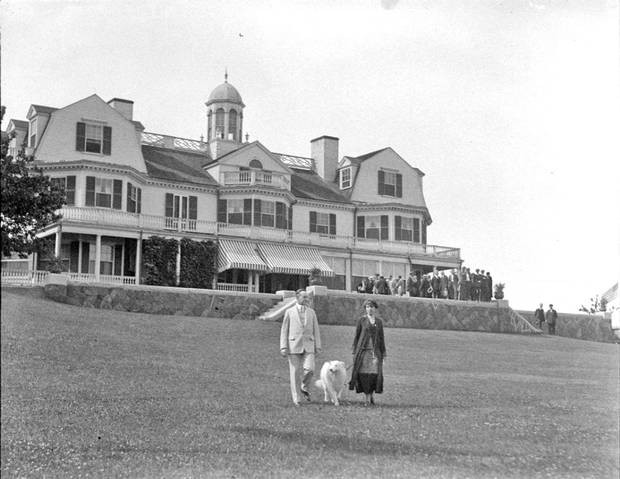
President Calvin Coolidge and his wife at White Court in Swampscott.
BOSTON PUBLIC LIBRARY
This was the summer after Mr. Coolidge's 16-year-old son died from an infection, an event that knocked the passion out of the 30 th president, leaving him even more taciturn than usual. He was beset by problems, frustrated by the growth of federal spending – especially for the military. And yet this was the one moment when the president – captured, along with his wife, in a splendid white summer suit in a photograph that can be found in the collections of nearby Lynn Public Library – actually relaxed. In that way, as in perhaps few others, Mr. Coolidge was a traditional American president: reinvigorated by vacation, replenished – maybe, even in his fathomless grief, re-energized. Mr. Trump can still heed the lesson – and should.
U.S. POLITICS IN PERSPECTIVE: MORE FROM DAVID SHRIBMAN




